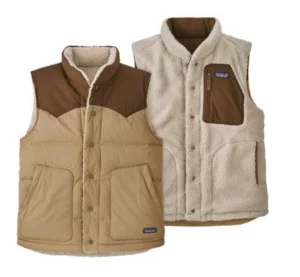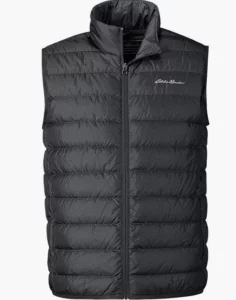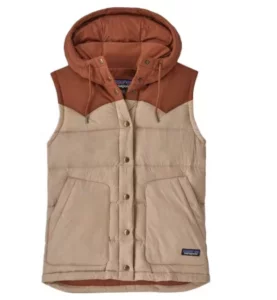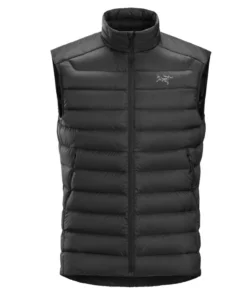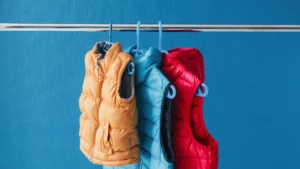
The Best Down Vests in Canada
If you’re struggling to find something to wear from fall to spring, a down vest might be the answer. Throwing a down vest over a sweatshirt or sweater will help keep you warm on chilly days. They also work in indoor settings, whether it be at the office or in your home. I’ve owned a down vest for many years, and I always wear it when I need some extra warmth. It’s become one of my most used pieces of clothing.
Trying to find a good down vest can be challenging. They come in all sizes and colours. To help you in your search, we’ve created this buying guide to list the best down vests in Canada. Read on to find the best one for you.
Our top picks
What to look for in a down vest and other considerations
Comfort and fit: A good down vest should fit close to your upper body but still give you room to layer. The vest should not restrict your movement in any way. If you feel the vest pinching around the armholes or limiting the motion in your back or shoulders, then it’s too tight.
Warmth: The main goal of a down vest is to keep you warm. But you don’t want to be too warm that you start sweating/overheating. That’s why a good down vest keeps you warm while still being breathable. Look for vests that have both good insulation and air circulation.
Versatility: One of the reasons down vests are popular is their versatility. They work well in outdoor and indoor settings. Still, some vests are specifically designed to be worn outside, while others are best used indoors. Ideally, you should pick a down vest that works well for active and casual wear.
Terms to know: When researching down vests, you may have come across some unfamiliar terms. Here are the important ones to know:
- Down: This is the material that insulates the vest. Down is usually plumage sourced from ducks and geese. Higher end vests typically use geese since more of its plumage can be fit into the vest. Some vests use specially treated down that repel moisture. Hydrodown™ is one example. More and more companies are switching to responsibly sourced down. For example, Patagonia uses down that is traceable back to the farm. This helps ensure high levels of animal welfare.
- Loft: The fluffiness of the down. Vests that have high levels of loft retain more heat.
- Fill power: Also known as FP, it refers to the volume or number of cubic inches one oz of down occupies. A vest with a high FP rating means the down has more loft. Vests with a high FP retain more heat. The typical range for FP is 600-900+.
- Fill weight: This is similar to fill power. It refers to the weight of down in the vest. The heavier the weight, the warmer the vest will be.
- Baffle design: Refers to the chambers that hold the down. There are two types of baffle design, and each impacts the vest’s performance. The first is called stich-through. It is the more common design since its easier and quicker to produce. The outer material is stitched to the inner lining. The second design is called box-wall. Instead of stitching the layers, an extra piece of fabric is inserted between them. This creates a box shape. Box-wall is the warmer design since the down has more room to loft, leading to better heat retention. However, box-wall vests are heavier and bulkier than stitch-through vests.
The best down vest overall
Patagonia Bivy Reversible Down Vest
This down vest from Patagonia is suitable for casual settings or outdoor activities. The Reversible Bivy vest has a water-resistant shell, fleece lining, and 600 fill power down insulation. The vest is made from 100% recycled material. For example, the duck and goose down is reclaimed from other down products. As its name suggests, this Patagonia vest is reversible. You can wear it with either the shell or fleece lining facing out. Simply fold the jacket inwards or outwards. The two side pockets are lined with microfleece for added warmth. There is also a chest pocket on the fleece lining. The down-filled collar and drop-tail hem provide additional coverage for your neck and backside respectively.
Customer thought the Patagonia Reversible Bivy was a versatile down vest. One person said it worked outdoors and indoors. Another customer said the vest could be worn in spring, fall, and winter. The reversible feature was a huge plus and was akin to a 2-for-1 deal. People could flip the jacket according to the weather. The Reversible Bivy was very warm and effectively blocked out cold winds. The design of the vest was also popular with customers. It had a retro style that didn’t look outdated or cheesy. The price ($285 CAD) may seem expensive, but people said it was worth the investment. Some people didn’t like the button up system; they said a zipper would have been easier to use.
Pros
- Versatile, good for indoor and various outdoor activities.
- Reversible.
- Retro style.
- Keeps core, neck, and hands warm.
Cons
- Button up system not for everyone.
- Expensive.
Best affordable down vest
Eddie Bauer CirrusLite
Down vests are expensive, but the CirrusLite from Eddie Bauer is a good affordable vest. It is rated at 650 FP and the insulation is made of responsibly sourced down. The shell and lining are also made from recycled material. To repel moisture, the outer shell has a StromRepel® DWR (Durable Water Repellent) finish. Compared to the Reversible Bivy, the CirrusLite is much lighter (it weighs 181g). This makes it easier to pack the vest in a bag.
The price for the Eddie Bauer CirrusLite was a hit with customers. When the vest went on sale, people were able to buy several for their friends or family members. Customers said the vest was comfortable and the fit was true to size. The vest also provided a good amount of warmth despite its slim and light build. The vest looked stylish and complimented people’s outfits. The main downside for the CirrusLite is that it lacks insulation. Some people said the vest was too light and thin to keep them warm in winter weather. Several customers agreed that the CirrusLite was best worn indoors. And if you plan on wearing it outside, use it as a middle layer underneath an outer jacket.
Pros
- Affordable.
- Easy to pack.
- Retains heat despite being light and thin.
- Stylish.
Cons
- Insulation is poor in cold weather.
Best down vest with hood
Patagonia Bivy Hooded Vest
While down vests do a good job of warming your body, sometimes you need protection for your head as well. This vest from Patagonia has an insulated hood coated with a DWR finish. You can also adjust the hood size with the two metal-tipped drawcords. Like Patagonia’s Bivy Vest, the Women’s Bivy Hooded vest is made of nylon recycled from fishing nets and duck and goose down from down products. The vest has a 600 FP rating thanks to its wide-baffle construction.
Customers said the Women’s Bivy Hooded Vest was warm and comfortable. It did an excellent job of keeping the core warm on chilly days. In terms of functionality, one customer said the vest can be worn casually or out on the trails. Another customer said that the vest did a good job a repelling water and dirt. Many people praised the pockets for their warm lining. The pockets were also great at storing phones, wallets, and other items. The hood was another positive point with consumers. It was big enough to cover the entire head, providing the right amount of protection. Many people said the vest fit true to size despite its bulky frame. Even when the size was too large, it made layering easier. Lastly, many people thought the Women’s Bivy Hooded vest was stylish. One person said they received several compliments on the vest. There were only a few downsides to this Women’s Bivy Hooded vest. The pockets do not have zippers, which means contents can easily fall out. This vest is a button up, which some people don’t like. Lastly, there were some problems with the fit. The vest was bulky and not form fitting, which was an issue for some customers (it was too loose on them).
Pros
- Hood provides ample protection.
- Versatile, worn either casually or actively.
- Stylish.
- Warm and deep pockets.
Cons
- Button up, which not everyone likes.
- No zippers for pockets.
- Bulky, not form fitting.
Best lightweight down vest
Arc’Teryx Cerium Vest
If you’re looking for a warm but light down vest, the Arc’Teryx Cerium is a good option to buy. It has lightweight down insulation with an 850 FP rating. To fight off moisture, the vest uses Coreloft™ synthetic material. The vest is also breathable, which limits sweat buildup. Because of its streamlined design, the vest works well as a midlayer during the winter. You can easily throw a winter jacket over the vest. Additionally, the vest can easily be folded into a pack/bag (a stuff sack is included with the vest).
People thought the Arc’Teryx Cerium was a versatile down vest. One person said they wore it mountaineering, snowboarding, and to the office. Another customer said the vest was their go to for technical and everyday clothing. The vest kept people warm without causing sweat. One customer said that just unzipping the vest partially or fully regulates heat. Many customers were surprised with how much warmth the vest provides despite it being light and thin. Portability was another positive for the Arc’Teryx Cerium. One person said the vest easily fit into a small pack and did not take up a lot of space. The main complaint for the Arc’Teryx Cerium was its fit. A few customers said the vest was made for people with a wider body. This issue likely only affected people with slimmer builds.
Pros
- Breathable.
- Portable.
- Provides good amount of warmth while being light and thin.
- Can be worn in various settings.
Cons
- Does not fit everyone perfectly.
Our methodology
For this buying guide, our team spent over eight hours researching various down vests. We only considered products rated four or more stars by consumers. We consulted several fashion and outdoor-living websites for further information on down vests. Our team also read many customer reviews to see what people look for in a good down vest. Lastly, we tried to pick down vests that were warm, versatile, and comfortable.
Frequently asked questions about down vests
What weather should you wear a down vest in?
Down vests can be worn in cold or mild temperatures. When combined with a base and outer layer, the down vest will keep your core warm. Try to avoid wearing a down vest in humid conditions. When down gets wet, the material clumps together and looses its loft. The vest will no longer insulate properly.
How do I wash a down vest?
There comes a time when your down vest needs cleaning. However, several questions or concerns may arise. Will soap/detergent ruin the vest? Will it shrink in the dryer? Is hand or machine washing better? These are all things I have asked myself. But after doing some research on the internet, I’ve learned a safe and effective way to wash a down vest.
For this question, I based my answer on two articles, one from The Spruce and the other from KathmanduOutdoor. Both have similar steps but differ in some areas.
Before you start washing you’ll the following items:
- Large tub or ink (for handwashing)
- Washer—ideally with no centre agitator (for machine washing)
- Dryer or hangers
- Dryer balls or tennis balls
- Enzyme based stain remover
- Down wash
- Cloth
As I alluded to earlier, many people wonder whether hand or machine washing is best for cleaning a down vest. The answer is you can do either. But for the purposes of this question, we’ll focus on machine washing.
Step 1: Remove any items from the pockets and read the vest’s care label. The first thing to do is check the vest’s pockets and remove any items. After all, you don’t want to accidently wash your phone or wallet. The care label tells you how to properly clean the vest. It has symbols that indicate what can and can’t be done. For example, the label may have symbols that say hand wash only and do not use bleach. As you can see, the care label will influence how you clean your down vest.
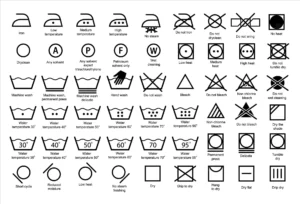
A list of care symbols. Source: Freepik
Step 2: Check the vest for any rips and holes. Washing a torn-up vest will leave your bathtub, sink, or washer full of soaked down. Take the time to fix any tears, it’ll save you from many headaches later on.
Step 3: Remove any visible stains from the vest. You can either do this with water or an enzyme-based stain remover. Whichever one you choose, apply it to a cloth any wipe of the stain.
Step 4: Load the vest into the washer. The best washer to use is a front-loader or top-loader without a centre agitator. Washers with a centre agitator can easily damage your vest. Before loading the vest, close all buttons, zippers, and Velcro fasteners to avoid snags. Then turn the jacket inside out.
Step 5: Set the cycle and water temperature. According to The Spruce, the washer cycle depends on how dirty the vest is. Choose the gentle cycle for a lightly dirty vest, and use the normal cycle if the vest is heavily soiled. However, Kathmandu Outdoor says to choose the gentle cycle no matter what. After considering both options, we recommend using the gentle cycle, just to be on the safe side. The water temperature should be at 30°C, which is around lukewarm. Kathmandu Outdoor also recommends skipping the spin cycle as drip drying is better for the down vest.
Step 6: Add the detergent. Unfortunately, most commercial detergents can not be used to clean your vest. They contain ingredients that strip down of its natural oils,. The oils keep the feathers and plumage separated, waterproof, and fluffy. Without it, the down turns stiff and brittle. Instead, use down wash from brands like Nikwax or Granger. Gentle detergents like Woolite or Castile soap are good substitutes as well.
Step 7: Load vest into the dryer. Once the washer cycle has finished, put the vest in the dryer. You’ll need to be a little carful doing this since the vest will be sopping wet. Set the dryer to low heat. You can also add dryer balls or tennis balls to the dryer. They will help fluff up the vest. Check on the vest regularly to prevent damage or shrinkage.
Step 8: Hang vest to finish drying: The vest may still be damp after the drying cycle ends. To make sure the vest dries completely, hang it on a clothes line or lay it on a clothing rack. If possible, leave the vest out in the sun. The vest should be completely dry in 24 hours.
For more info on cleaning a down vest, click here.
How to layer a down vest?
In winter, down vests work best as a middle layer (also known as the insulating layer). This means the vest will be under an outer layer (usually a synthetic jacket) and over a base layer (usually a thermal shirt). In milder and warmer weather, you can wear a down vest over sweater or windbreaker. If you plan on wearing your vest around the house, layering it over a short or long sleeve shirt works well.
This article by GQ lists some of the ways you can layer a down vest.
Down vests or synthetic vests, which is better?
Down and synthetic vests essentially use different types of insulation. Both have their advantages and disadvantages.
Down insulation is light and compressible. Therefore, it has a high warmth-to-weight ratio; you can use more of it to insulate the vest. Down is also durable. With proper care, your down vest can last for decades. However, this changes when down gets wet. The material clumps and lose loft. As a result, wet down loses its insulation properties. Down vests are also more expensive than other vests. The reason is that the down is sourced from duck or geese, which is a costly process in itself. Because down effectively traps heat, they are not very breathable. This can be good and bad. Your body stays warm, but you can overheat easily. Lastly, washing a down vest is a delicate process. Overall, there is greater chance of ruining your down vest when cleaning it.
Synthetic insulation is water resistant and will continue to retain heat when wet. It is also cheaper than down since the insulation is made from materials like polyester or nylon. Washing a synthetic vest is much easier since it dries quickly. Synthetic insulation is breathable. It regulates your body temperature without making you too hot or cold. On the downside, synthetic insulation is heavy and bulky. This means that most synthetic vests have a smaller warmth to weight ratio than down vests. They are also harder to pack into a stuff sack.
So, which one is better? The answer depends on the weather conditions you’ll be dealing with. Because of its heat-trapping powers, down vests are perfect for cold and dry temperatures. However, they do not do well in wet and humid climates. Synthetic vests can be used in variety of conditions. With that being said, synthetic vests are best worn in humid weather. They will still keep you warm in the cold, just not as well as down vests.
Click here for a detailed comparison between down and synthetic insulation.
Read more
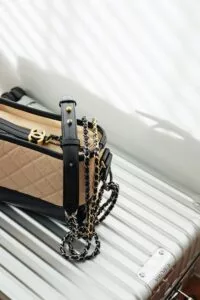
The Best Luxury Bags Worth the Investment
Designer bags come at a high price. But buying a timeless design and high quality means a luxury bag can become a favourite accessory or heirloom to pass down through generations.
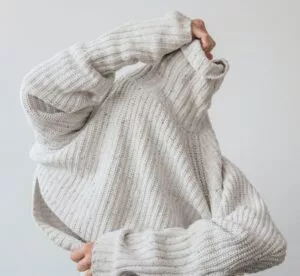
Timeless Winter Style: Canada Appropriate Coats, Boots and More (Women’s Edition)
Fierce winter does not mean a lack of style.
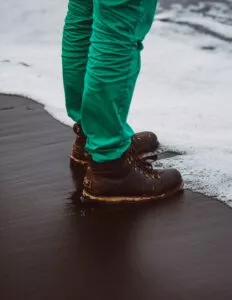
The Best Men’s Winter Boots in Canada
Boots to keep your toes warm even in a Canadian winter.
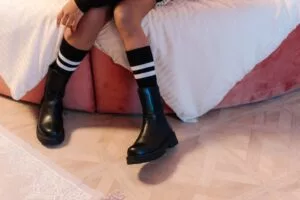
How to Convert Your Shoe Size from Women to Men or Men to Women
When it comes to finding the best shoes for your size, it can be a daunting task.
